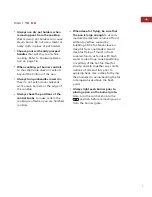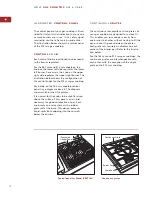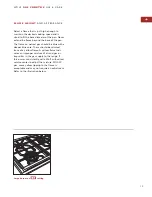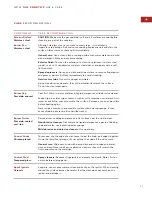
18
C O O K T O P
C L E A N I N G T I P S
Wait until surfaces are cool before cleaning.
For best results, wipe up spills and spatters
as they occur and immediately after the
cooktop has cooled. If splatters are allowed
to cook on, they may permanently damage
or stain the finish.
If in doubt about using one of your
cleaners, check the label. To check if it is
safe to use on your cooktop, try a small
amount on an inconspicuous area using
very light pressure.
Use caution when spraying cleaners. Some
contain caustic ingredients that can damage
adjacent parts and finishes. Protect the
adjacent parts by masking them off so that
the overspray is contained to the finish
being cleaned.
Do not spray cleaners on electrical controls,
igniters, wires or knob valve stems.
W O L F
G A S C O O K T O P
U S E & C A R E
S T A I N L E S S S T E E L F I N I S H
For the stainless steel exterior finish, use a
soft, nonabrasive stainless steel cleaner and
apply with a soft lint-free cloth.
To bring out the natural luster of both
finishes, lightly wipe the surface with a
water-dampened microfiber cloth, followed
with a dry microfiber cloth. All work should
follow the grain direction of the finish.
Better results are obtained by keeping the
cloth in continuous contact with the metal.
Under no circumstances should you use a
metallic or highly abrasive cleaner or cloth,
as this will permanently scratch the surface.
DO NOT use abrasive cleaners on your
cooktop; they will permanently scratch
the surface.
















































